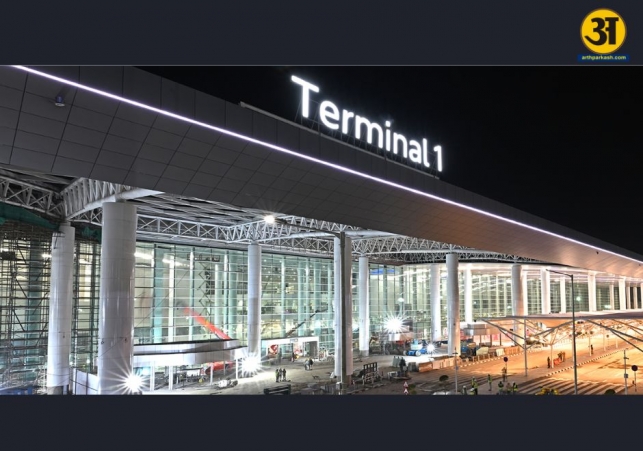
T1 terminal at Delhi IGI reopens after 9-month closure
Delhi IGI airport’s T1 terminal reopens for passengers 9 months after roof collapse
After being shut down for nine months, Terminal-1 (T1) at Delhi’s Indira Gandhi International (IGI) Airport is now open for passengers. The terminal will be fully functional starting Tuesday, April 15, 2025. It had been closed since June 2024, when part of the canopy collapsed during heavy rainfall. The tragic incident had killed a cab driver and injured eight others.
Following the accident, the damaged area was sealed, and repair and demolition work started in July 2024. Some operations resumed in August, but only partially—only gates 5 and 6 were used. Now, all six gates (1 to 6) and the entire T1 building are ready for passengers again.
With this reopening, all flights that were using Terminal-2 (T2) will now shift to T1. These flights will begin moving from April 15, according to Delhi International Airport Limited (DIAL), which operates the airport. The move will allow T2 to shut down for its own renovation, which is expected to take three to four months.
Currently, T2 handles around 270 to 280 daily flights, carrying more than 46,000 passengers every day. Most of these flights belong to IndiGo and Akasa Air. Once T1 takes over these flights, T2 will be temporarily closed for upgrades.
IndiGo confirmed that starting April 15, all its flights from T2 will shift to T1. The airline will now only operate from Terminals 1 and 3 at Delhi airport.
Major terminal upgrade
The new T1 terminal is a big improvement compared to the older one. Earlier, T1 had a total area of 55,740 square metres. Now, it has grown nearly four times in size to 206,950 square metres. This expansion is part of the airport’s Phase 3A development project, which aims to make Delhi airport one of the best in the world.
Earlier, the terminal had separate buildings for arrivals and departures, named T1(C) and T1(D). Now, everything has been merged into a single modern terminal. This design is meant to make travel easier for passengers.
Some of the new features include facial recognition (DigiYatra) at all entry gates. There are also 108 Common Usage Self-Service (CUSS) kiosks where passengers can check in themselves. The baggage handling system has also improved. The number of bags it can handle per hour has gone up from 3,240 to 6,000.
There are now 10 baggage reclaim belts, each 70 metres long, for faster luggage delivery. This means passengers will not have to wait too long at the conveyor belts.
The terminal also has several passenger-friendly amenities, such as:
-
Bigger shopping and food areas
-
Quiet zones for rest
-
Yoga rooms and prayer rooms
-
Group seating areas with charging points
-
Smart washrooms
-
Self-medication rooms
-
Babycare facilities
One of the highlights of the new terminal is that it is a green building. Natural light has been used throughout the building to reduce electricity use. This is part of the airport’s effort to be more eco-friendly and sustainable.
T1’s total capacity has now increased to 40 million passengers per year. Combined with T2 (15 million) and T3 (45 million), the airport can handle more than 100 million passengers every year—making it the only airport in India with such a large capacity.
The revamped T1 terminal was inaugurated by Prime Minister Narendra Modi in March 2024, just before the accident happened in June. After the roof collapse, the government ordered a full structural audit of all airports across the country.
Now, officials are confident that with T1 and T3 fully running, Delhi Airport will not face any major congestion even when T2 is closed. Civil aviation secretary Vumlunmang Vualnam said the airport is well-prepared to manage all passenger traffic smoothly.
In summary, the reopening of Terminal-1 marks a major step in Delhi Airport’s expansion and modernization. With better technology, larger space, and more passenger services, the airport is now ready to meet the increasing demand for air travel in India.





